Having a flexible spine is key to restoring your whole body and spine mobility! Since your spine generally has to move with most other movements, it is important to ensure it is flexible and able to move as much as you require, without discomfort.
Around 80% of the population will experience back pain in their lifetime. Whatever the cause of this, the pain can initiate a general, global muscle spasm as a protective mechanism. This is the body’s way of restricting further movement to prevent further damage. Unfortunately though the increased activation of these larger, superficial muscles reduces the ability of your core muscles and they very quickly become dormant. Muscle wasting can occur in as little as four days of disuse and we then adopt altered ways of moving to try and compensate. I explain more about Lower Back Pain here.
Mobilising and stretching the spine is an important aspect of this recovery, but also as a preventative measure to keep your spine healthy and avoid future problems. Muscles need to be stretched to restore their natural length and relieve tightness. Mobilising exercises encourage joint mobility and allows the joint, and in turn the muscle to move through their normal range of movement.
Try these simple exercises below daily to allow your spine to move freely and restore normal, natural movements! You should not experience any pain when doing these exercises, and if you do- stop and seek professional advice. You can also try this 20 minute Pilates for Low Back Pain home workout that covers these exercises as well as some strengthening work.

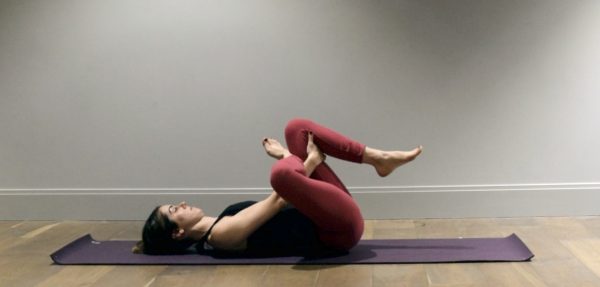
This KNEE HUGS exercise can be held statically by just just drawing the knees in to your chest, or you can also rock gently side to side. Try also hugging one knee in to your chest at a time to focus more so on one side.
Moving from the knee hug position to the FIGURE OF 8 GLUTEAL STRETCH is a good way to continue the spine flexion stretch and adding in a gluteal stretch too. Often our gluteals (buttocks) are weak, more so when we have back pain too, and weak muscles= tight muscles. Relieving the tension here can help free up the pelvis and lower back.
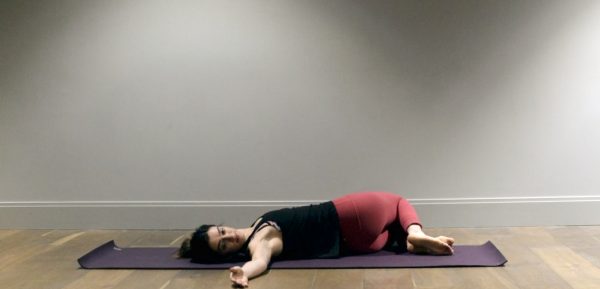
This pilates exercise HIP TWIST is brilliant for mobilising through the entire spine! Here we move the legs off to one side and allow the pelvis and spine to fully rotate, finishing by turning your head to the opposite side. You can of course shorten the range and only move the knees slightly to the sides to begin with and build up to a larger range of movement.
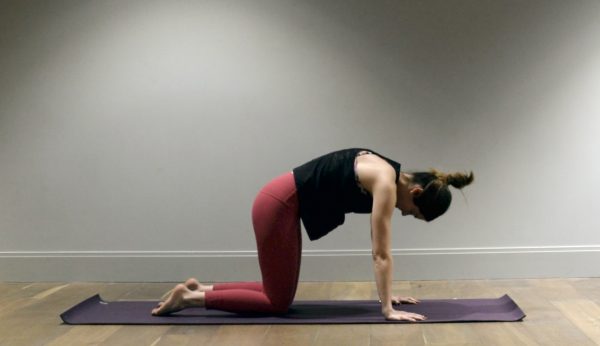
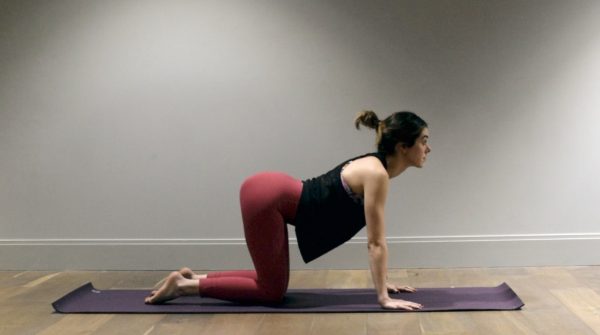
These CAT/COW mobility exercises are very popular with back pain sufferers as you can limit the range you work through, just like HIP TWIST above. Begin on all fours, and gently curl the chin and tail bone under while flexing your spine up to the ceiling. Then reverse this movement by looking upwards and allowing your spine to extend (dip down) like the second picture. Work between these two ranges until your spine feels mobile again!
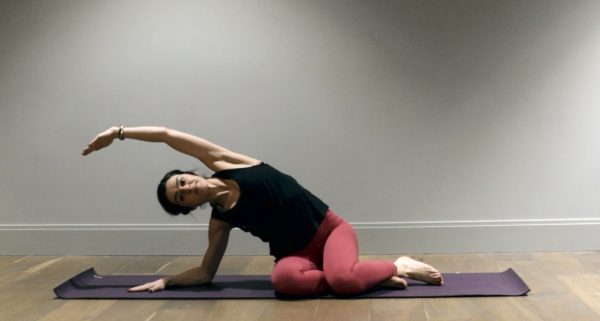
MERMAID stretch. This is one of my favourites and I think I teach this in almost every pilates class at some stage! It is great for opening up your sides from your shoulder right down to your hips, and hits the back muscles, as well as relieving tension in the ribcage region. By using your top arm as a lever you can really reach and stretch up and over in to this one for extra length.
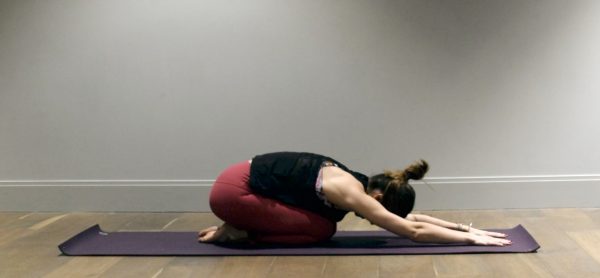
This SHELL STRETCH is also known as Child pose. Send your hips back one your heels, sink down in to your mat and reach long with your arms. This is a great relaxation position to be in and allow your body to ease in to the stretch with each exhale.
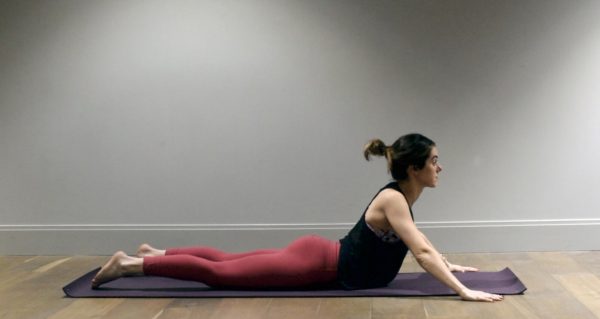
Finally we have COBRA. This exercise should be done every day by everybody, I feel! It is my most favourite spinal exercise and I finish everyday by doing these before bed. Cobra encourages spine extension. A position that we rarely achieve in normal day-to-day life. Our spines spend far too long flexing forwards the majority of the day, creating extension weakness and poor postures.
This exercise encourages spine mobility and should be gradually eased in to, rather than forcing yourself backwards. Lead with the head and create length through the head. If this position is too much for you, try simply lying on your stomach for a few minutes instead for a more relaxed extension based exercise.
These exercises can all be performed with multiple repetitions, or as a series one after the other. See which way works best for you!
